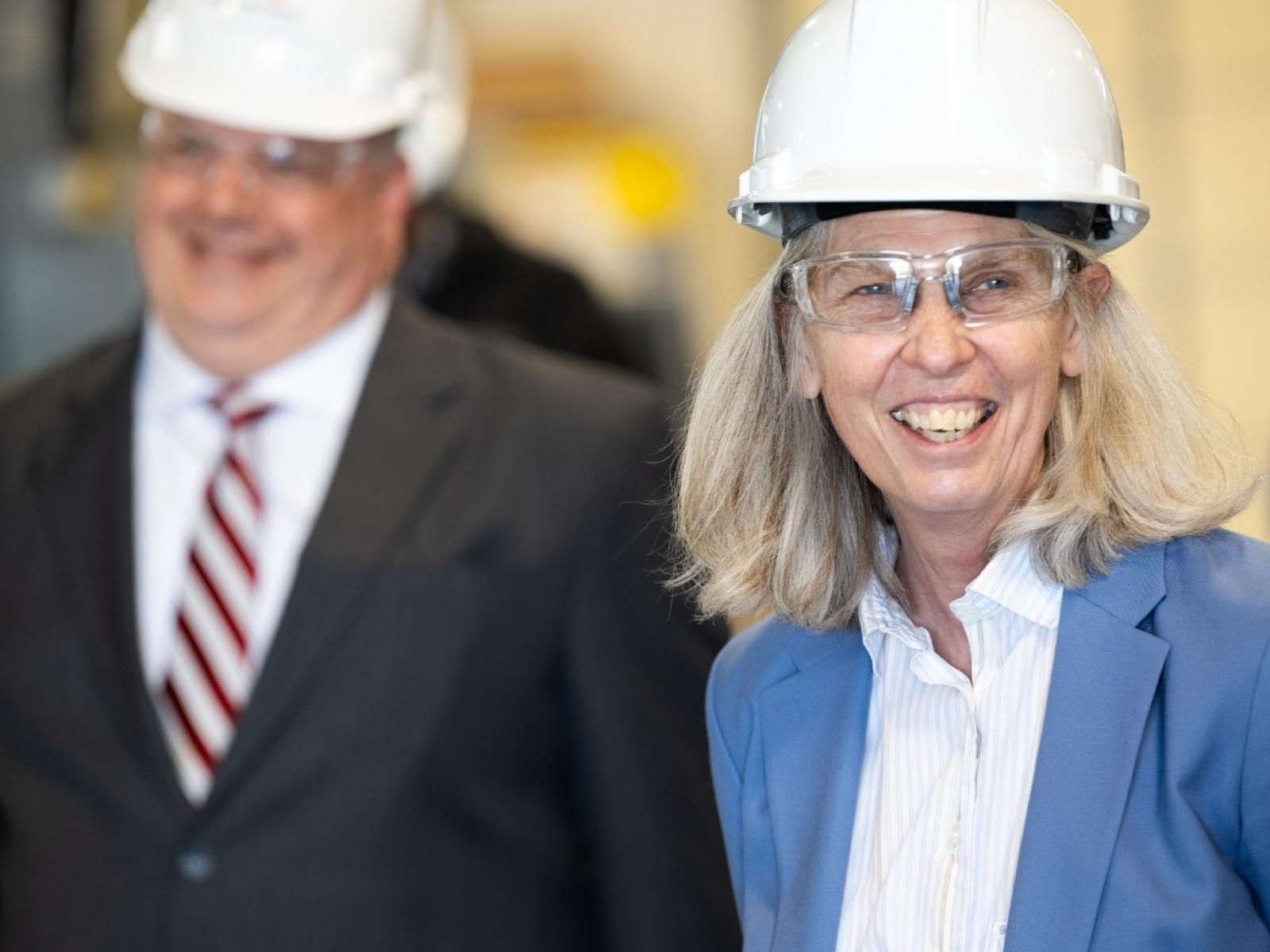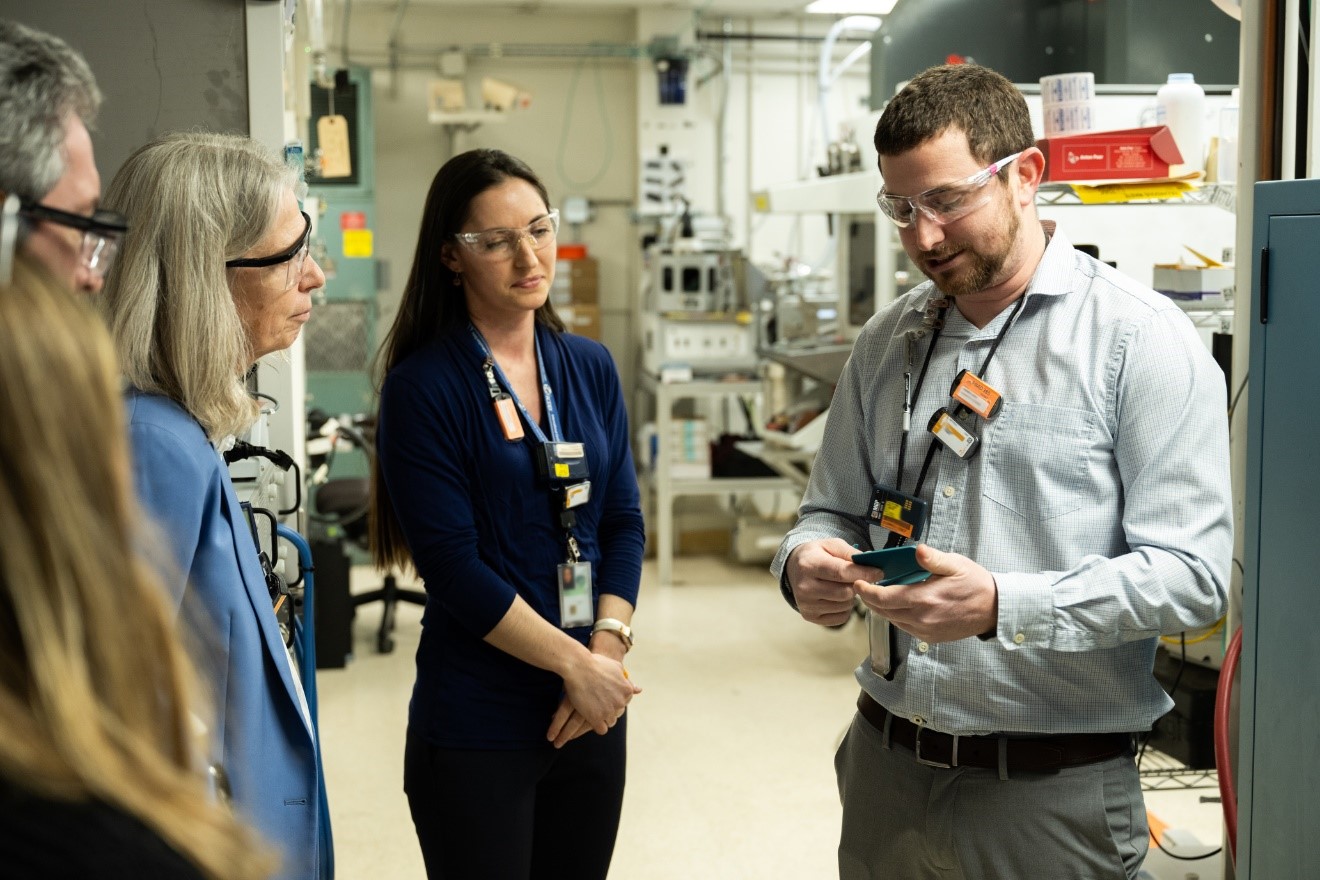NNSA Administrator Visits Pacific Northwest National Laboratory

Pacific Northwest National Laboratory welcomed NNSA Administrator Jill Hruby for a visit March 13–14, 2024, to learn about PNNL’s work supporting NNSA missions.
(Photo by Andrea Starr | Pacific Northwest National Laboratory)
On March 13–14 Jill Hruby, Under Secretary for Nuclear Security of the U.S. Department of Energy (DOE) and Administrator of the National Nuclear Security Administration (NNSA), and her military assistant, Captain Phillip Sylvia, Jr., toured Pacific Northwest National Laboratory (PNNL) facilities in Richland, Washington, and received expert briefings on work to maintain a reliable nuclear stockpile, support global security and stability, and address emerging challenges. At each tour stop, staff at PNNL described their research, important collaborations, and the impact to NNSA missions.
Kicking off the visit, Laboratory Director Steve Ashby welcomed Administrator Hruby to PNNL, “We are committed to serving as a strategic partner to NNSA and appreciate the opportunity to showcase how we bring the breadth of our expertise to bear on its important missions. As one of DOE’s most diverse national laboratories, we draw upon capabilities spanning fundamental science to applied engineering to address NNSA’s top priorities.”
“I am impressed with the passion of PNNL research staff for their work and their contribution to NNSA missions. With that enthusiasm, anything is possible,” said Hruby.
For the tour of the Shallow Underground Laboratory, Hruby dressed out in anti-contamination clothing and ventured into this clean facility 40 feet underground that houses exquisitely sensitive instruments, which can detect nuclear explosions for treaty monitoring.
At the Interdiction Technology and Integration Laboratory, the visitors learned how researchers strengthen capabilities to detect, disrupt, and investigate the smuggling of nuclear and radioactive materials domestically and internationally.
At the Applied Engineering Laboratory, Hruby learned how PNNL is reinventing metals manufacturing through solid phase processing techniques. The long experience gained in vehicle and energy missions is being applied to the NNSA mission to support a reliable nuclear stockpile.
Administrator Hruby toured the Radiochemical Processing Laboratory (RPL), which has been serving the nation by housing the research to support national security, energy, environmental cleanup, and isotope research for more than 60 years. NNSA’s investment in the RPL Extended Life Plan is critical to readiness for current and future NNSA needs such as nuclear materials research to support the nuclear weapons enterprise and reducing the threat of nuclear proliferation.

In addition to the tours, Administrator Hruby heard from leading experts in artificial intelligence, nuclear forensics, advanced manufacturing, and biosecurity.
“It was an honor to share with the Administrator the commitment and passion our staff have for the outstanding work we do in support of the NNSA. PNNL’s research, technology development and policy engagements have long supported the NNSA in their mission to prevent, counter, and respond to nuclear proliferation around the world. Through enduring partnerships with the NNSA laboratories, PNNL supports their efforts to maintain a safe, secure, and reliable nuclear stockpile, through science and technology,” said Associate Laboratory Director for National Security Deb Gracio.
Published: March 22, 2024